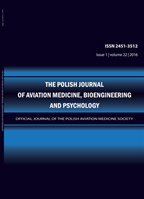2021, Volume 27, Issue 2
OPTIMIZATION OF TESTS FOR VERIFICATION OF A DIAGNOSIS MADE BY A GENERAL PRACTITIONER (GP)
JAN MAGOTT1, IRENA WIKIERA-MAGOTT2
-------------------------------------------------------------------------------------------------
1Faculty of Informatics and Telecommunication, Technical Informatics Chair, Wroclaw University of Science and Technology
2Faculty of Post-Diploma Education, Clinic of Pediatric Nephrology, Wroclaw Medical University
Autor korenspondencyjny: JAN MAGOTT; Faculty of Informatics and Telecommunication, Technical Informatics Chair, Wroclaw University of Science and Technology; email: jan.magott@pwr.edu.pl
Full text
Streszczenie
Introduction: In a GP’s work, the fundamental problem is the accuracy of the diagnosis under time constraints, cost limitations on health care and medical standards. A GP selects the medical tests for verification of a hypothetical (preliminary) diagnosis made after an interview and physical examination. Optimization of such verification tests as urine, blood, ultrasound examination and simple X-ray examination in order to improve the diagnosis accuracy has been attempted in the paper. Diagnostic potential, cost and precision of tests have been accepted as optimization criteria.
Methods: For a health problem, a set of preliminary diagnoses is given. The diagnostic potential of tests in verification of the diagnosis from this set is determined using the Analytic Hierarchy Process. Then for each of these diagnoses, a set of tests with sufficiently great total diagnostic potential and minimal cost is found using a binary linear programming problem. The precision of tests in verification of the diagnoses is estimated using medical expert intuition. Then the pairs (hypothetical diagnosis, test) with the greatest coefficient of test precision impact in verification of the hypothetical diagnosis are selected. Finally, the recommendations for improving precision of the selected tests are defined.
Results: In the case study, a lumbar pain health problem is considered. Six preliminary diagnoses and four tests have been theoretically considered, i.e., no sample of patients. Two recommendations for the tests have been formulated.
Discussion and Conclusions: A quantitative method for indicating week points of medical tests in order to improve diagnosis accuracy has been proposed. A limitation of the case study is the estimation of diagnostic potential of tests and their precision by one medical expert only.
Słowa kluczowe
diagnostic potential of test, test cost, test precision, Functional Resonance Analysis Method, expert method, Analytic Hierarchy Process
